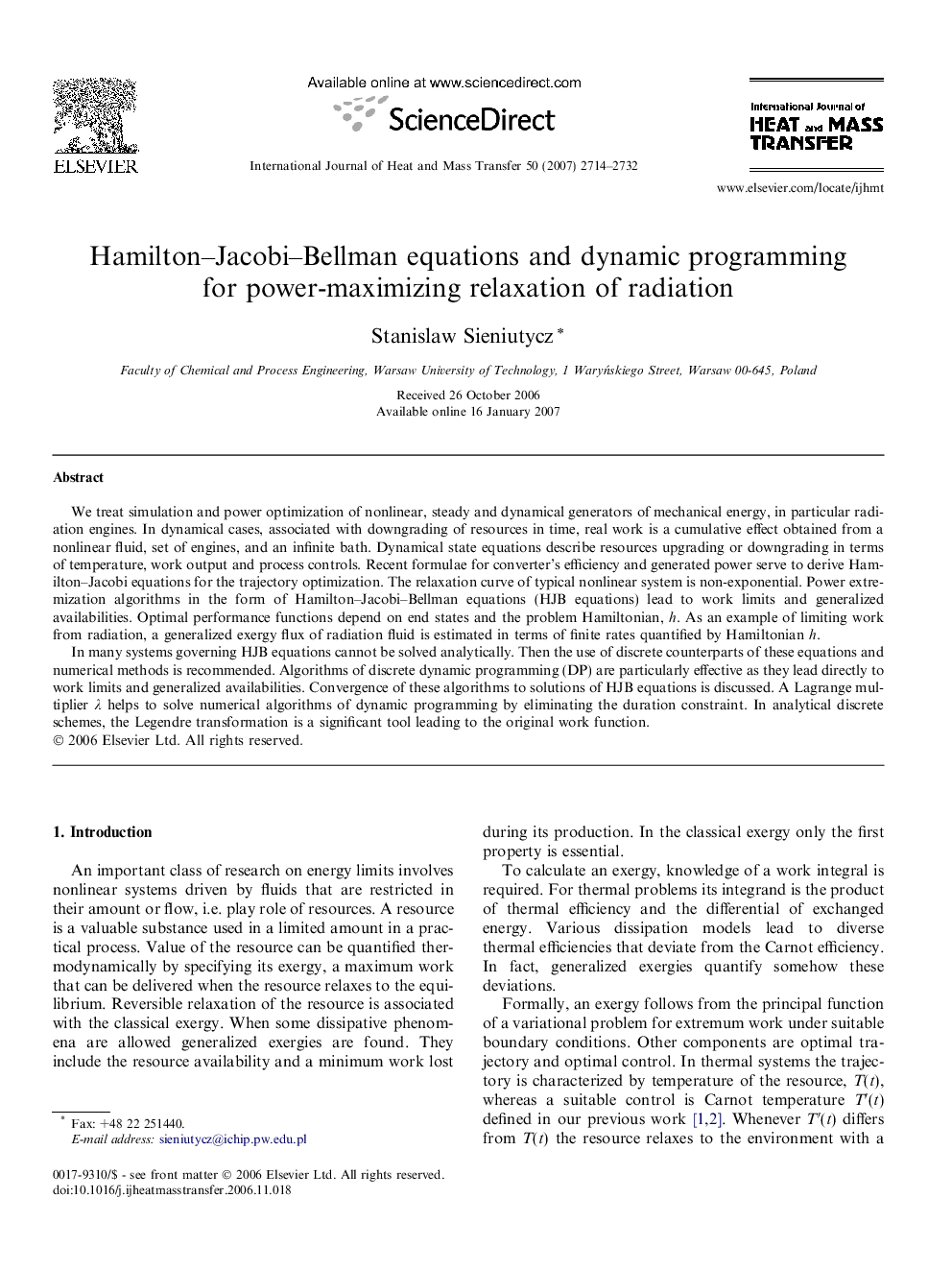| Article ID | Journal | Published Year | Pages | File Type |
|---|---|---|---|---|
| 661505 | International Journal of Heat and Mass Transfer | 2007 | 19 Pages |
We treat simulation and power optimization of nonlinear, steady and dynamical generators of mechanical energy, in particular radiation engines. In dynamical cases, associated with downgrading of resources in time, real work is a cumulative effect obtained from a nonlinear fluid, set of engines, and an infinite bath. Dynamical state equations describe resources upgrading or downgrading in terms of temperature, work output and process controls. Recent formulae for converter’s efficiency and generated power serve to derive Hamilton–Jacobi equations for the trajectory optimization. The relaxation curve of typical nonlinear system is non-exponential. Power extremization algorithms in the form of Hamilton–Jacobi–Bellman equations (HJB equations) lead to work limits and generalized availabilities. Optimal performance functions depend on end states and the problem Hamiltonian, h. As an example of limiting work from radiation, a generalized exergy flux of radiation fluid is estimated in terms of finite rates quantified by Hamiltonian h.In many systems governing HJB equations cannot be solved analytically. Then the use of discrete counterparts of these equations and numerical methods is recommended. Algorithms of discrete dynamic programming (DP) are particularly effective as they lead directly to work limits and generalized availabilities. Convergence of these algorithms to solutions of HJB equations is discussed. A Lagrange multiplier λ helps to solve numerical algorithms of dynamic programming by eliminating the duration constraint. In analytical discrete schemes, the Legendre transformation is a significant tool leading to the original work function.
